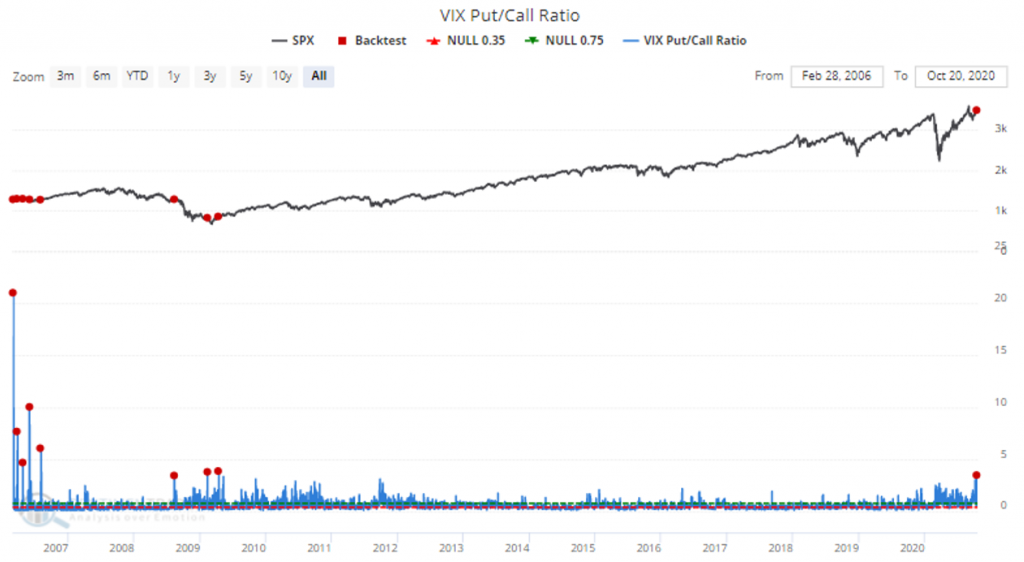
Uncertainty about the outcome of the U.S. 2020 presidential election is starting to ratchet back up from relatively calm levels earlier this month.
Some Wall Street strategists make the case that two weeks shy of the Nov. 3 election, some narrowing of the chances for a victory in the presidential race by former Vice President Joe Biden against incumbent President Donald Trump is causing some pause among investors.
A poll of key battleground states shows that Biden leads Trump by 3.9 percentage points, 49.1 vs. 45.2, compared with a 5 percentage point lead enjoyed by the 45th president’s Democratic challenger about a week ago, according to a recent average of polls in those key states from RealClearPolitics.
A general election nationwide poll by RCP shows a wider 8.6 percentage-point lead for Biden, but the tightening of the race in battleground states may be reviving some anxieties for investors, experts said.
“While it is perhaps true that during the first two weeks of October risk markets were supported by a widening of US presidential odds, which by itself implied a lower probability of a close or contested US election result, over the past week or so these odds have started narrowing again,” wrote Nikolaos Panigirtzoglou, a quantitative strategist at JPMorgan Chase & Co., along with a team of strategist.
The retrenchment in U.S. stocks on Monday was attributed to the narrowing of the polls in the presidential race, not the lack of progress on fiscal stimulus plans in Congress, some analysts said.
Some analysts say a sweeping victory for Biden, which could usher in a so-called blue wave of Democratic wins in the White House and Congress, could lay the groundwork for a more expansive coronavirus fiscal relief package that could in turn deliver a fresh jolt to the economy and the markets.
However, a less decisive win for Biden could lead to a less substantial aid package, which could harm the nascent recovery from the worst pandemic in more than a century, the thinking goes.
Phil Orlando, Federated Hermes, chief equities strategist, tells MarketWatch that he isn’t sure the polls accurately reflect how the race for the White House will play out in early November and encourages investors to be cautious, pointing to the surprise win by Trump against Democrat Hillary Clinton in 2016.
“Our base case is that the polls are wrong, there’s an oversampling biased error that a lot of polls aren’t correcting for,” Orlando said.
In 2016, the polls showed Clinton would win the presidency comfortably but a lot of the polling companies haven’t corrected their polling methodologies for those errors, he said.
“We spend more time judging their methodologies than most, and we found two companies, where they’ve corrected for the oversampling biased error,” the Federated strategist said.
For now, the market seems fixated on the prospects for fresh fiscal aid from Congress and the path of COVID-19 and remedies to fight the pandemic, but election jitters could come back into fuller view.
A Tuesday report from the analysts at SentimenTrader say that the Cboe Volatility Index VIX, 3.60%, or VIX, could see a spike in the lead up to Election Day. They also note that the so-called put-call ratio for the VIX has spiked to a level not seen since the Great Financial Crisis in 2007-08. The volatility index tends to rise as stocks fall as investors use it as a guide to hedge against potential market downturns.
Market analysts use the put-to-call ratio as a barometer of the market’s speculative sentiment. With a spike in the ratio for the implied level of volatility investors may be preparing for market turbulence around Election Day.
The VIX, which is a gauge of bullish and bearish options bets on the S&P 500 index SPX, -0.22% for the coming 30-day period, stands at around 29 and has climbed 6.3% so far this week, putting the index well above its historical average between 19 and 20.
Stock indexes in recent months have been drifting near record highs, with the Dow Jones Industrial Average DJIA, -0.34% up 2.2% so far in October, a historically bad month for equities, while the S&P 500 index is up 2.7% over the period and the Nasdaq Composite Index COMP, -0.27% has climbed 3.5%.